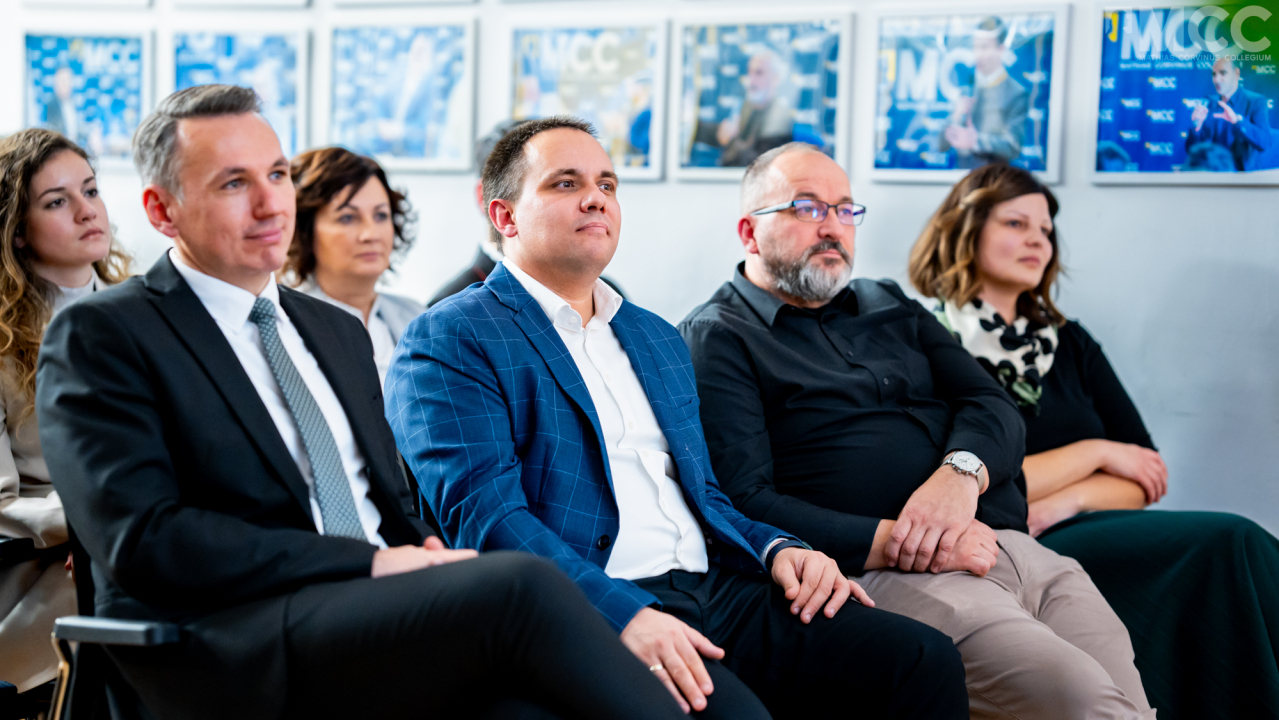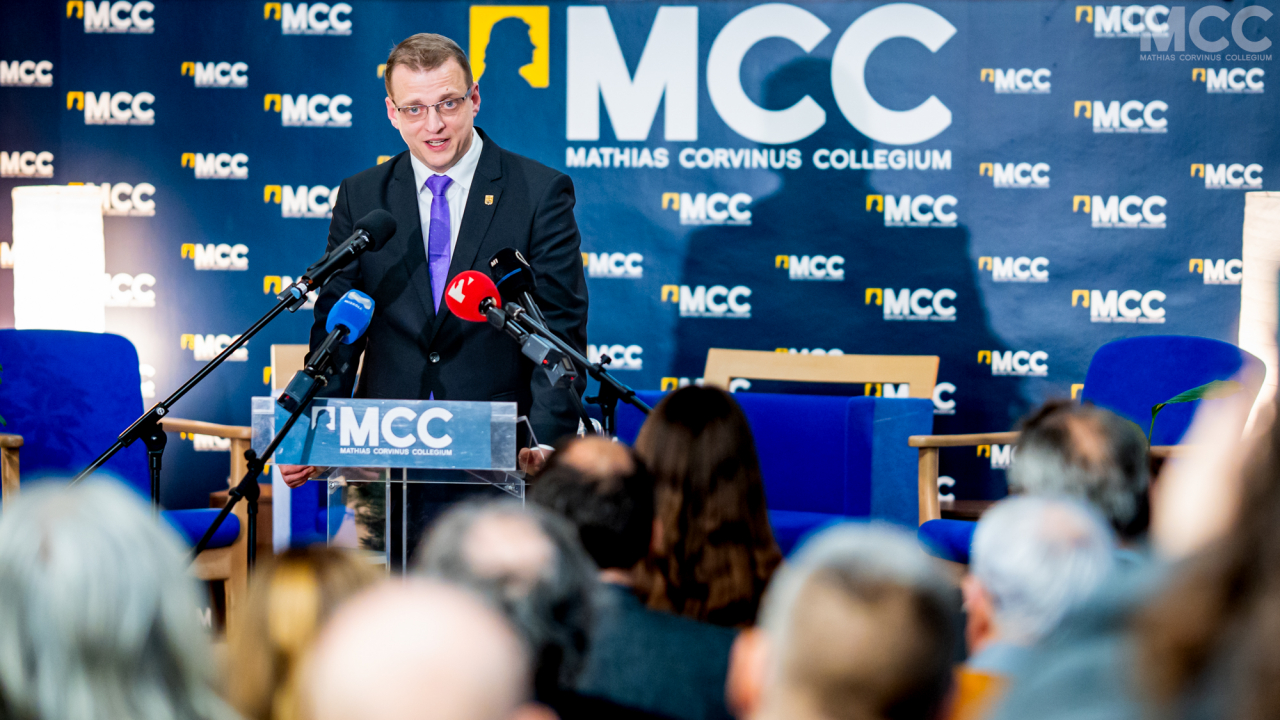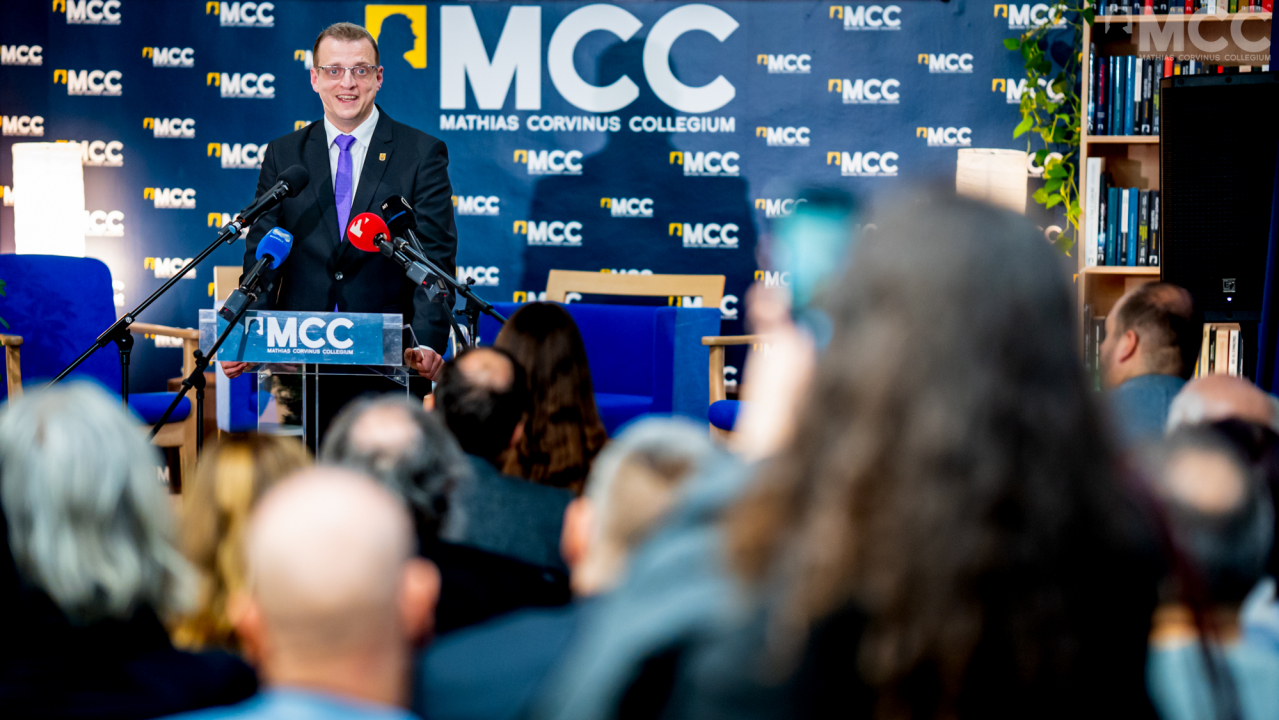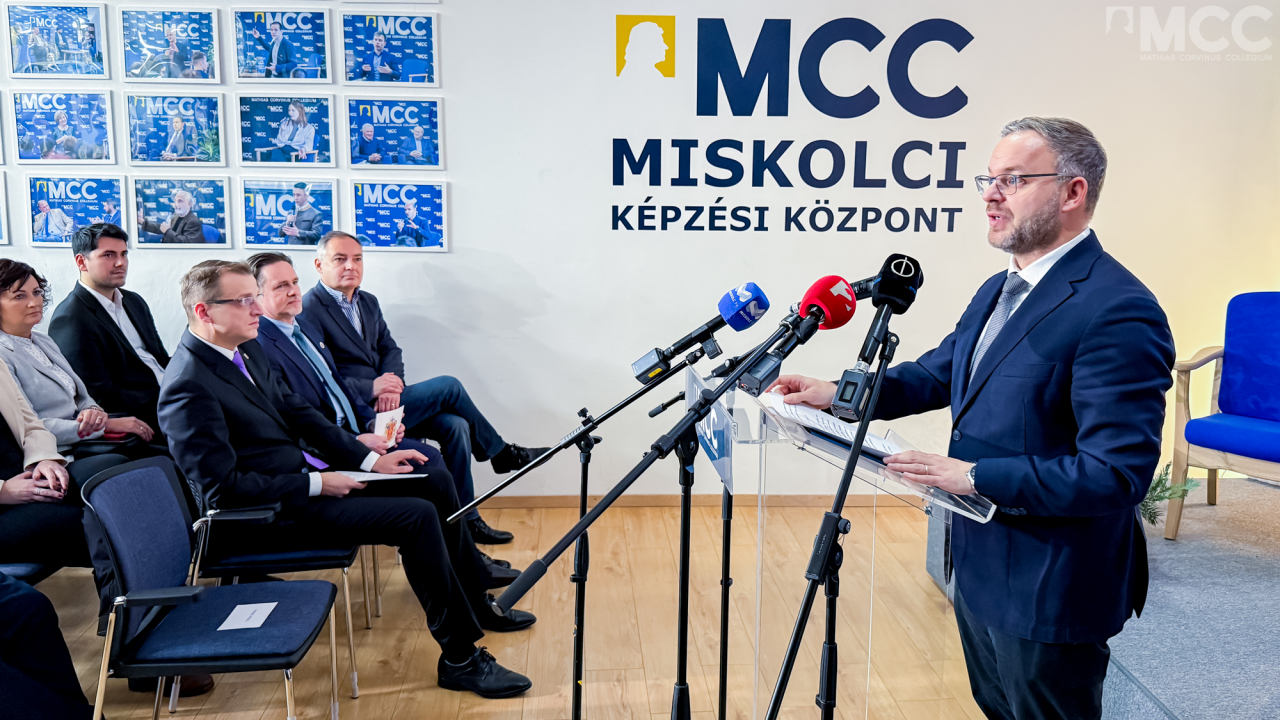Reading time: 4 minutes
Architecture expresses the relationship of a community to itself. A building tells us what we think of ourselves - a building is a community's dream of itself. The MCC itself is a big community dream!" said Balázs Orbán, Chairman of the Board of Trustees of MCC, in his welcome speech before the panel discussion on the restoration of the Korona Hotel in Miskolc.
Balázs Orbán stressed that in 2021, MCC is determined to grow and expand its educational activities to the whole Carpathian Basin. As part of this, they will take up issues that are important to the local people, but which have not been solved in the past, as MCC's responsibility extends not only to talent management but also to the preservation of built heritage.
Zoltán Alakszai, Archbishop of Borsod-Abaúj-Zemplén County, expressed his gratitude to MCC for taking this matter in hand and bringing this iconic building to life. This is important for all local patriots in Miskolc, as it gives local talent a chance in Miskolc. The Archbishop said that he also has a personal commitment to the building, as he was part of the city's efforts to get it back more than nine years ago.
The Mayor of Miskolc, József Tóth-Szántai, also shared a personal story: he used to go to the cinema here as a child, when the building was used as a movie theater. He thanked the MCC and the students who will bring this iconic building to life.
Following the speeches, the participants of the professional forum shared their personal experiences and connections to the city, with a special focus on the MCC building. The rich history of the building was discussed in detail, as well as the process of reconstruction, which will preserve the distinctive elements of the building's different periods. They also reviewed the opportunities that the building can offer to the urban community, including its role as a venue for community events and activities.
Márton Székely, a heritage conservation expert from MCC's Real Estate Investment Directorate, explained that the building, now known as the Korona Hotel, had been in a state of neglect for a long time. The history of the building dates back more than 200 years, and during the reconstruction, special attention will be paid to preserving the distinctive elements of each period. The aim of the restoration is to restore the building to its former glory, while at the same time bringing it up to modern standards.
Gábor Erhardt, head of the MCC's Architecture and Memory Center, emphasized his personal connection: he used to work in Miskolc, so he had the opportunity to get to know the different faces of the city, especially the hidden world of the main street, which has always fascinated him.
Zsanett Horváth, project architect of TSPC Ltd., said that the building has undergone major renovations over the years, but fortunately many valuable elements have been preserved. During the reconstruction, special attention will be paid to restoring the original façade and the inner courtyard, preserving the historic character of the building. The Red Hall, which can accommodate around 400 people, will have a similar capacity after the renovation and will continue to be a venue for important events.
Orsolya Jager-Lőrincz, MCC's Director of Real Estate Investments, stressed that the MCC has a unique aura as a talent development institution, creating a special atmosphere for learning. The learning spaces in the building are designed to foster intensive dialogue and active collaboration between students and teachers. The new part of the building will be equipped with modern, energy-efficient solutions to ensure a pleasant and sustainable environment. These innovative solutions will not only increase comfort, but also contribute to the environmentally friendly operation of the building, in line with MCC's sustainability goals.
She stressed that the building will not only be a historical monument, but also a meeting place for the local community. The event halls, which will be restored during the restoration, will be opened up to the city's institutions, so that they can once again play an important role in community life. The building will thus not only preserve the values of the past, but will also host community events of the present and the future.
















